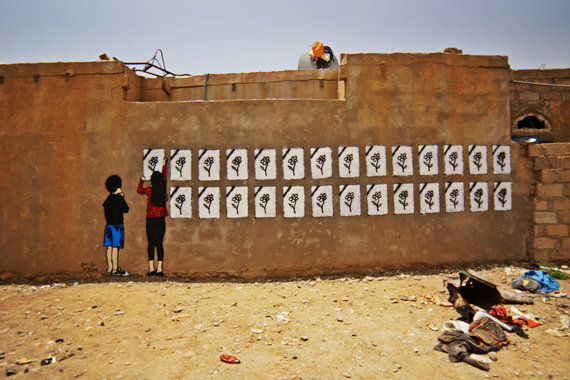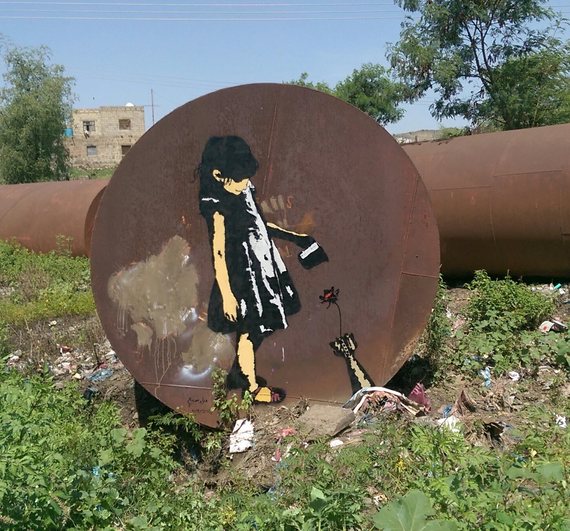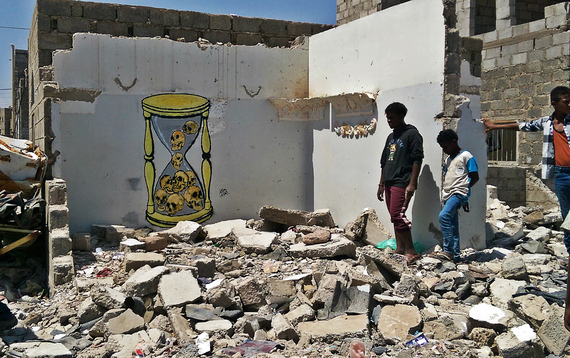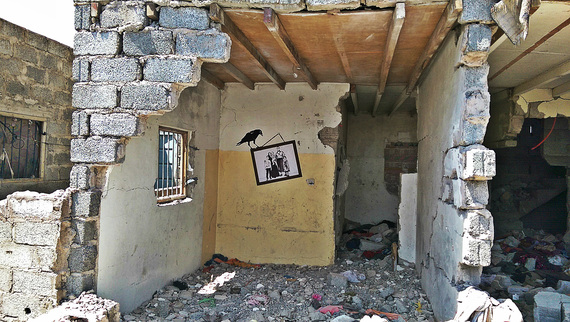For many, Yemen war is a forgotten one. Nonetheless, aspects of Yemen war are meant not to be forgotten for Yemeni graffiti artist, 28, Murad Subay who believes walls shall represent accounts of warfare. In the wake of Yemen's 2011 uprising, as he utilized his art to reflect the political and social concerns of that phase, Murad has been regarded as a revolutionary artist-perhaps the first Yemeni political graffiti artist of his kind in Yemen's contemporary history. Today, determined to continue his artwork, and in light of Yemen war, Murad Subay continues to shed light on the human cost of the war, which could make him to be regarded as a war artist.
As of 16 October, health facilities in Yemen had reported 32,307 casualties (including 5,604 deaths) - an average of 153 injuries or deaths every day, according to a UN report.
Murad was compelled to create a visual account of that destruction of human lives. 'Ruins' is the title of his latest art work intended to depict the impact of the war by commemorating war victims across Yemen. 'Ruins' was initiated in May, 2015 in Sana'a, aiming to leave graffiti paintings on what's left of the destroyed houses by the bombings. One of his outstanding graffiti art is when Murad beautifully commemorated 15 children killed in Bani Hawwat area, in Sana'a, where air strikes destroyed more than seven houses. Murad painted 15 children faces on the wall of what's left of the destroyed house. Another 27 civilians were killed as well in that attack.
In our email correspondence, Murad told me that he doesn't want to focus only on his town of residence, Sana'a. He tried to visit the war-torn Taiz city and paint. He managed to paint at Hoban area, then when he tried to paint in further areas in Taiz, he was denied to enter to the heart of the city by one of the warring parties. When I asked who exactly denied him, he prefered not to disclose further information. I expect that is so for his own security. Murad did not let that stop him; he went back to Sana'a and continued painting.
The painting process usually takes place with the help of a number of Murad's friends and even with the help with strange people who happen to pass by and feel interested in what's been done. Even though Murad has been occasionally harassed by different officials in power for the work he does, he praises greatly the support he has been getting from the Yemeni society - 'that's the main thing that keeps me going since 2012,' he tells me. Murad believes that the significance of graffiti art lies in its power in reflecting a society's concerns better than words.
Murad's experience with graffiti has began since 2011 with his consecutive art campaigns which include; 'The Walls Remember Their Faces', 'Colour the Walls of Your Street' and today's 'the Ruins'. Nonetheless, Murad is thirsty to dig more into graffiti art and seeks to improve his knowledge about art academically. He hopes to study it further in the near future.
Murad is not just another graffiti artist; who's being dubbed as 'The Banksy of Yemen.' Murad is a rare humanist voice in an extreme polarized political scene in Yemen. It's been remarkable the audacity his art has in depicting Yemen's critical political and social issues following Yemen's 2011 uprising till the ongoing conflict. Given the growing political division among the nation influenced by the multi-layered conflict in Yemen, it's been hard to find a voice that can reflect the humanism of the situation; speaking about the killing and bloodshed of all sides, regardless of who fired the bullets first. Murad's art doesn't only express Yemeni people's pain but it also revives a sense of humanity that's suffocated by massive injustices.



